I took a look at openSuse 11.1 nearly a year ago and so it’s time to see what’s changed with openSuse 11.2. For those new to my blog, when I review a new version of a distro I’ve reviewed before, I usually just do a comparison to the previous review. Also important to know is that I review distros the point of view of ease of installation and ease of use. While I’ve often been told that I should use a distro for X amount of time before reviewing it, pretty much all Linux distros are the same in day-to-day usage. The only real difference being whether updates break stuff or not. But, since all versions of Linux basically all have the same software, I don’t really see what I would gain from using a distro over a number of days. Also, there are tons of other reviewers that do that. Finally, I only tend to get those comments whenever I’ve said bad stuff about a distro. Whenever I say all good stuff I never get people saying that I should spend more time with the distro or that I shouldn’t use a virtual machine. So, I think there’s something to be said about that. At any rate…let’s get into openSuse 11.2.
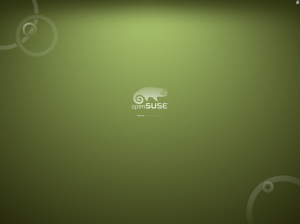
The openSuse release engineers continue to craft a beautiful experience with openSuse. Look at the above screenshot as well as the next one.
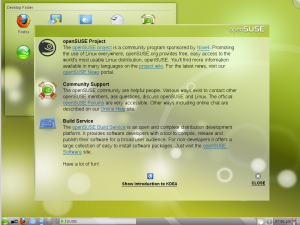
They have the best, most beautiful default KDE 4 desktop I’ve ever seen. Once again, I think it’s awesome they have the tutorial on how to do stuff in KDE. And, the following confirms they’ve gone to KDE 4.3.
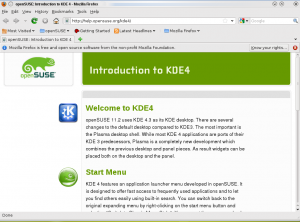
Also, I love the icon for ethernet connectivity:

And then I decide to install openSuse. Just like last time it warns me about not having enough RAM.
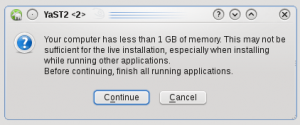
The installer is easy and very matter-of-fact. It definitely feels like it’s made for a SOHO (Small Office/Home Office) audience. Here are some screenshots from the install:
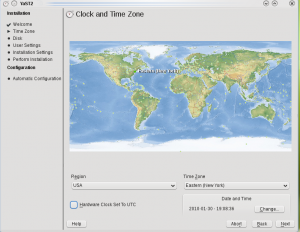
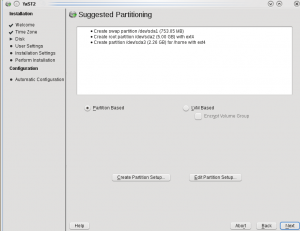
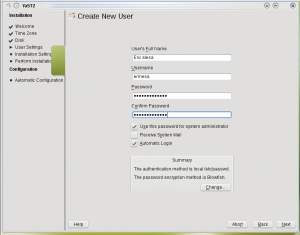
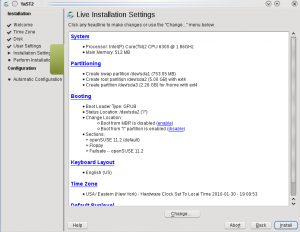
And then I reboot.
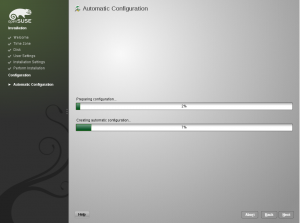
Again, it has a post-install configuration that runs and then I’m at the desktop.
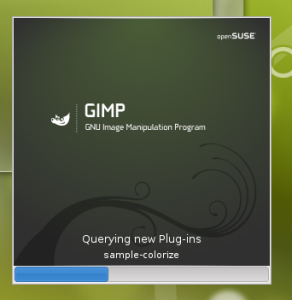
openSuse’s prettification of the desktop extends even to the load screens of programs such as The GIMP. And I kept looking around at other parts of the desktop:
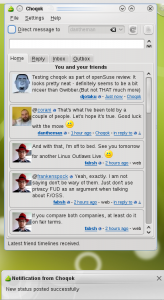
Choqok is included for updating Twitter and Identica. It’s pretty nice.

In my previous review I mentioned that I had a bit of trouble finding where to install software. It is, logically, under the Computer tab off of the menu.
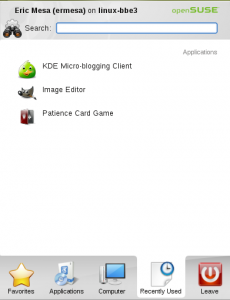
One of the things that I like about KDE is the “recently used” tab on the kicker menu. This is a feature I make great use of on my Windows computer and I had to setup launchers to accomplish the same in Gnome.
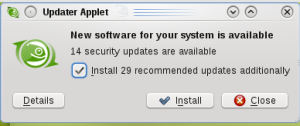
There were some updates to install and so I did so.

Here are the programs that were available to upload. I like that it told you what was being updated. After that was done I gave it a reboot.
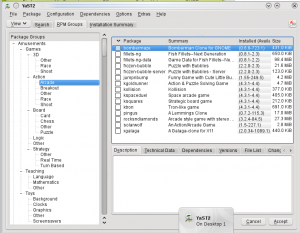
Here’s the installation screen. This sticks out like a sore thumb as such an ugly program in such an otherwise beautiful distro. Come on guys, this is such an eyesore! I know you can make beautiful distros! For example, yast:
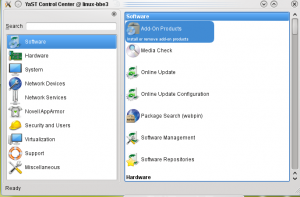
That looks very nice. Ok, so the last thing I wanted to do is see what happens when I attempt MP3 playback. So I grab an MP3 from last.fm. Then I launch it in Amarok.

But the music wouldn’t play.
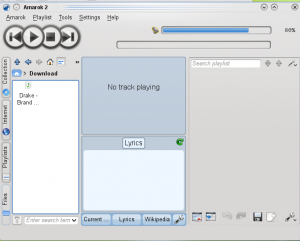
Although MP3s don’t work automatically, some instructions are available here. As well as instructions on how to fix Amarok. Basically you have to configure an outside repository to grab the dodgy codecs. This is where openSuse falls over. Up until now it was up there with Fedora and Ubuntu in my mind. But it just doesn’t handle MP3 playback gracefully. I don’t expect it to be able to play MP3s because of patents, but they should either do what Fedora does or what Ubuntu does. Fedora leads you to legally purchase the codecs from Fluendo. Ubuntu lets you download the codecs as long as you promise you aren’t doing anything bad. openSuse doesn’t do either one. It just lets playback fail. This is very bad, Novell. This is something that needs to be fixed yesterday.
So, that’s all the traditional review stuff. Now to talk about my experience a bit. openSuse 11.2 is a very, very nice KDE implementation. It’s beautiful, the menus aren’t cluttered and, unlike Fedora (at least on my installed system) KDE is stable. It feels very professional and I was starting to think that if I were going to install a KDE-based distro for my wife that I would go with openSuse. I’m going to be looking at Mandriva soon, but openSuse sets a high bar to cross for a KDE distro. There are a few niggles here and there like MP3 playback, but for someone in my house I wouldn’t mind figuring out how to make that work. For someone for whom I cannot provide local tech support, I think, for now, I’m still sticking with Mint or Ubuntu. So, unless Mandriva is hot stuff, it looks like openSuse is in a fight with Mandriva for third place.
I mention this every time, but there might be some issues with Novell and openSuse vis-a-vie their agreement with Microsoft. But, years later, so far the world has not crumbled apart for Linux. On technical merit alone, openSuse has a lot working for it. It looks nice and I wouldn’t feel bad putting it in front of my employees if I were a business employer. It also appears to be well-geared for a home computer, although perhaps not as much as some of the other distros. I would definitely give openSuse a try if you’re in the market for a new Linux distro.

One response to “Review: openSuse 11.2”
van tai, van tai hang, thfue xe tai, thue xe cho hang, van tai hang hoa, van chuyen,thue xe tai, thfue xe tai, thue xe cau,…
[…]It’s A Binary World 2.0 » Review: openSuse 11.2[…]…